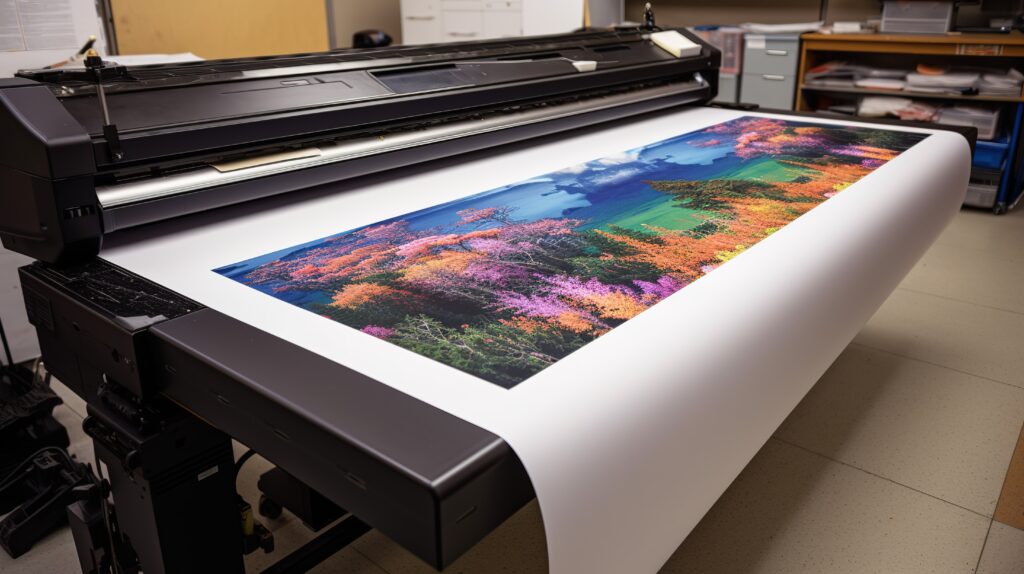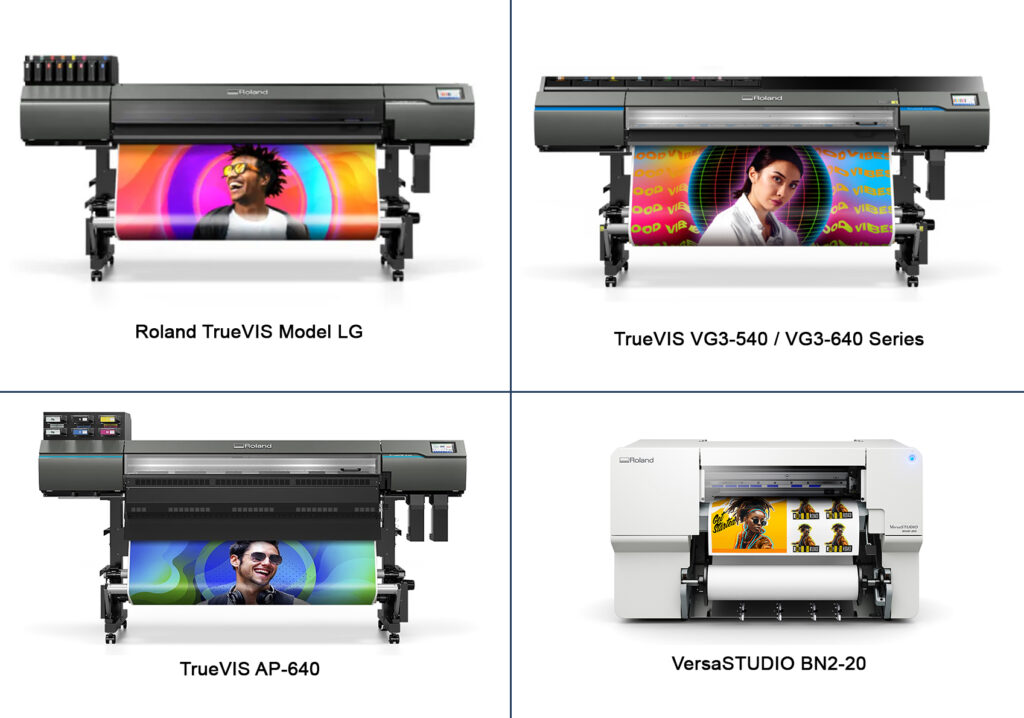
15 Most Frequently Asked Questions About Large Format Printing
Large format printing is a vital tool for many industries, from advertising and marketing to architecture and interior design. Its ability to produce high-quality, oversized prints makes it indispensable for creating impactful visual communications. Here, we address some of the most frequently asked questions about large format printing to help you understand its capabilities, applications, and benefits.
1. What is Large Format Printing?
Large format printing, also known as wide-format printing, refers to printing graphics, images, and text on a larger scale than traditional printing methods. It involves using specialized printers that can handle larger print widths, typically ranging from 18″ to over 100″. This type of printing is commonly used for creating posters, banners, billboards, murals, and other large visual displays.
2. What Are the Common Applications of Large Format Printing?
Large format printing is used in various applications across different industries:
- Advertising: Billboards, posters, and transit ads.
- Retail: Storefront displays, promotional banners, and point-of-purchase displays.
- Events: Trade show graphics, event backdrops, and exhibition stands.
- Interior Design: Murals, canvas prints, and custom wallpaper.
- Architecture: Blueprints, construction plans, and site maps.
3. What Types of Materials Can Be Used in Large Format Printing?
Large format printing can be done on a wide variety of materials, including:
- Paper: Common for posters and indoor banners.
- Vinyl: Ideal for outdoor banners, billboards, and vehicle wraps due to its durability.
- Canvas: Used for art reproductions and high-end signage.
- Fabric: Suitable for flags, banners, and backdrops.
- Foam Board: Often used for mounting prints for presentations and displays.
- Metal and Wood: Used for more permanent signage and high-impact visual displays.
4. How Does Resolution Affect Large Format Printing?
Resolution plays a crucial role in the quality of large format prints. Measured in dots per inch (DPI), resolution determines the detail and clarity of the printed image. For large format printing, a resolution of 150 DPI at full size is generally sufficient, as these prints are often viewed from a distance. Higher resolutions might be needed for prints viewed up close to maintain sharpness and detail.
5. What File Formats Are Best for Large Format Printing?
For large format printing, high-quality file formats are essential to ensure optimal print results. The most commonly accepted file formats include:
- PDF (Portable Document Format): Maintains high quality and is universally compatible.
- TIFF (Tagged Image File Format): Ideal for images due to its lossless compression.
- JPEG (Joint Photographic Experts Group): Widely used for photographs, though it uses lossy compression.
- AI (Adobe Illustrator) and EPS (Encapsulated PostScript): Preferred for vector graphics, ensuring scalability without loss of quality.
6. How Should Files Be Prepared for Large Format Printing?
Proper file preparation is key to achieving high-quality large format prints. Here are some tips:
- Set the Correct Resolution: Ensure your files are at the appropriate DPI for the size of the print.
- Use CMYK Color Mode: Printers use CMYK (Cyan, Magenta, Yellow, Black) rather than RGB (Red, Green, Blue) colour mode.
- Bleed and Crop Marks: Include bleed and crop marks in your design to account for any trimming that may occur.
- Vector Graphics: Use vector graphics where possible, as they can be scaled without loss of quality.
- Proofing: Review your file carefully for any errors or inconsistencies before sending it to print.
7. What Are the Benefits of Large Format Printing?
Large format printing offers numerous benefits, including:
- Visibility: The large size makes your message stand out and grab attention.
- Versatility: Can be used on various materials for different applications.
- Durability: With the right materials, large format prints can withstand outdoor conditions.
- Customization: Allows for highly personalized and unique designs tailored to specific needs.
- Quality: Advances in printing technology ensure high-resolution, vibrant, and detailed prints.
8. How Long Does Large Format Printing Take?
The turnaround time for large format printing depends on several factors, including the size of the print, the complexity of the design, the type of material, and the volume of the order. Generally, simple prints can be completed within a few days, while more complex projects may take longer. It’s advisable to discuss timelines with your printing service provider to get an accurate estimate.
9. How Much Does Large Format Printing Cost?
The cost of large format printing varies based on several factors:
- Size: Larger prints naturally cost more than smaller ones.
- Material: Different materials have varying costs, with some being more expensive than others.
- Ink Usage: Full-color prints use more ink and can be pricier than single-color prints.
- Volume: Larger orders might benefit from bulk pricing discounts.
- Finishing Options: Additional services like laminating, mounting, and framing can increase the overall cost.
10. Can Large Format Prints Be Used Outdoors?
Yes, many large format prints are designed specifically for outdoor use. Materials like vinyl and certain fabrics are durable and weather-resistant, making them ideal for outdoor signage, banners, and billboards. Additionally, UV-resistant inks are used to prevent fading from exposure to sunlight, ensuring the longevity of the prints.
11. What is the Lifespan of Large Format Prints?
The lifespan of large format prints depends on the materials and inks used, as well as the environmental conditions they are exposed to. Outdoor prints made with durable materials and UV-resistant inks can last several years, while indoor prints typically have a longer lifespan due to less exposure to harsh elements. Regular maintenance, such as cleaning and proper storage, can also extend the life of large format prints.
12. What Printing Technologies Are Used in Large Format Printing?
Several printing technologies are commonly used in large format printing:
- Inkjet Printing: Widely used for its ability to produce high-quality images with fine details and vibrant colours.
- UV Printing: Uses ultraviolet light to cure or dry the ink as it is printed, suitable for a variety of materials including plastics, glass, and metal.
- Solvent Printing: Uses solvent-based inks that adhere well to non-porous surfaces, making it ideal for outdoor signage.
- Latex Printing: Uses water-based inks combined with latex, providing durable and eco-friendly prints suitable for both indoor and outdoor use.
13. What are the Best Large Format Printers Available?
Some of the best printers are:
- TrueVIS VG3 Series Printers/Cutters
The TrueVIS VG3-540 / VG3-640 Series Printers Cutters combine cutting-edge printing technology with precise cutting capabilities, delivering outstanding graphics and designs with vivid colours and exceptional precision. - Roland VersaSTUDIO BN2 Series Desktop Printer/Cutters
Offers a compact yet powerful solution for high-quality printing and precise cutting, making it perfect for small businesses and creative endeavours. Its versatile capabilities and user-friendly design make it an ideal choice for producing a variety of graphics and designs with exceptional detail and colour. - TrueVIS AP-640
Blending the rapid drying and eco-friendly attributes of resin printing with the remarkable colour rendition, user-friendly operation, and dependable performance synonymous with TrueVIS Series printers - Roland Model LG-640 / LG-540 / LG-300
Designed to deliver high-quality UV printing on a variety of rigid and flexible substrates, allowing businesses to produce stunning graphics, signage, and promotional materials. With their advanced UV ink technology and precise printing capabilities, these printers offer exceptional colour accuracy, durability, and versatility, making them ideal for a wide range of applications in the graphics and printing industry.
14. What Are Some Tips for Designing Effective Large Format Graphics?
Designing for large-format printing requires attention to detail and specific considerations:
- Keep it Simple: Simplify your design to ensure clarity and impact from a distance.
- Use High-Resolution Images: Ensure images and graphics are high-resolution to avoid pixelation.
- Bold Fonts and Colors: Use bold, easily readable fonts and high-contrast colours for maximum visibility.
- Scale and Proportion: Design at scale to ensure the elements are appropriately sized for the final print.
- Test Your Design: Print a small-scale version to check for any issues before final printing.
15. How Can I Ensure My Large Format Prints Are Eco-Friendly?
To make your large format printing more eco-friendly, consider the following:
- Use Sustainable Materials: Choose recyclable or biodegradable materials for your prints.
- Eco-Friendly Inks: Opt for water-based, latex, or UV inks that have lower environmental impact.
- Efficient Printing Practices: Work with a printer that follows sustainable practices, such as minimizing waste and using energy-efficient equipment.
- Recycling: Dispose of old prints responsibly by recycling materials whenever possible.
By understanding these frequently asked questions about large format printing, you can make informed decisions about your printing projects, ensuring high-quality results that meet your needs. Whether for advertising, events, or interior design, large format printing offers a versatile and powerful way to create impactful visual communications.
Are you in the process of starting or expanding your large format printing business and in need of expert guidance on purchasing the right printing machine? Look no further! Our team of industry experts is here to provide you with valuable insights and expert opinions to help you make the best decision for your business. With a deep understanding of the large format printing industry, we can assist you in selecting the ideal printing machine that meets your specific requirements and budget. Contact us today for a personalized consultation and let us help you make the right investment for your business’s growth and prosperity.










